15+ Cause & Effect Essay Examples to Download
In the realm of academic writing, the cause and effect essay stands as a fascinating exercise that delves into the intricate web of connections between events, actions, and outcomes. This genre of composition seeks to explore the underlying relationships between various elements, shedding light on the ripple effects that shape our world. In this article, we’ll take an in-depth look at cause and effect essay examples, uncovering their essence, and providing you with a comprehensive guide to master the art of crafting these insightful pieces.
1. Cause and Effect Essay Structure
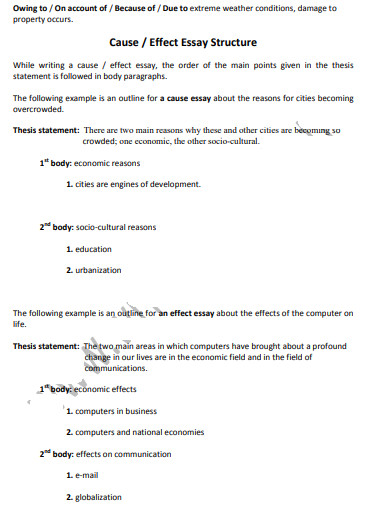
writing.itu.edu.tr
2. Great Topics for Cause and Effect Essay
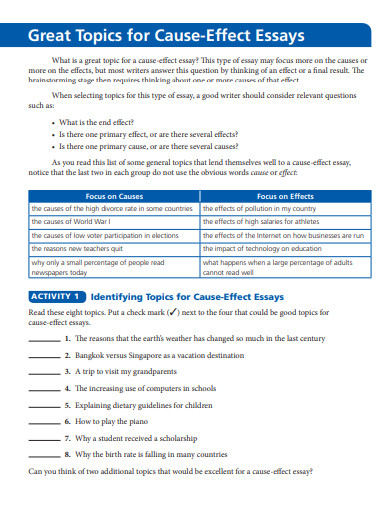
eltngl.com
3. Cause and Effect Essay Example
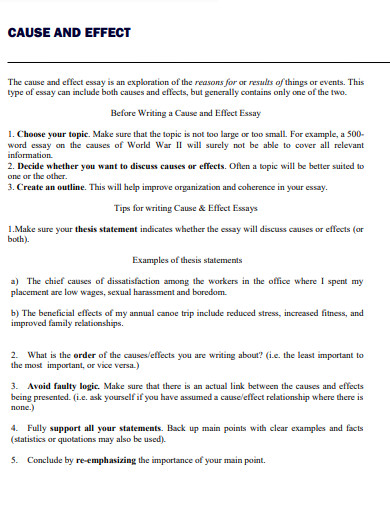
liberalarts.humber.ca
4. Cause and Effect Essay Template

pearson.com
5. Cause and Effect Essay Definition
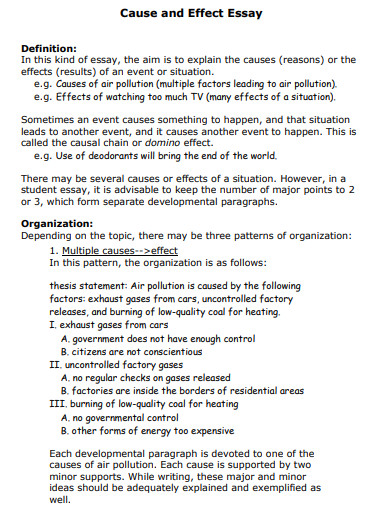
buowl.boun.edu.tr
6. College Cause and Effect Essay
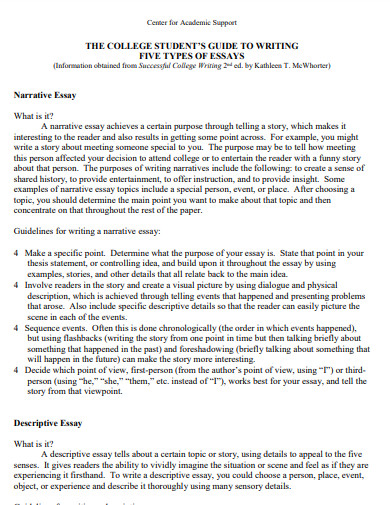
intranet.missouriwestern.edu
7. Persuasive Cause and Effect Essay

webs.um.es
8. Simple Cause and Effect Essay
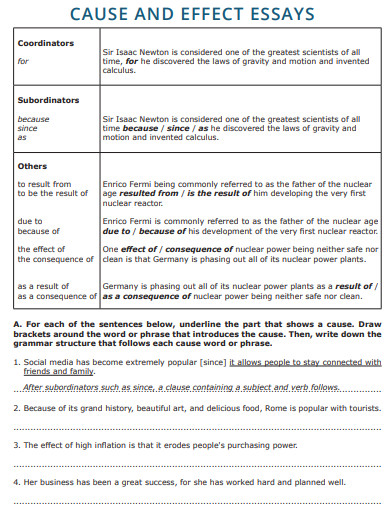
teach-this.com
9. Best Cause and Effect Essay
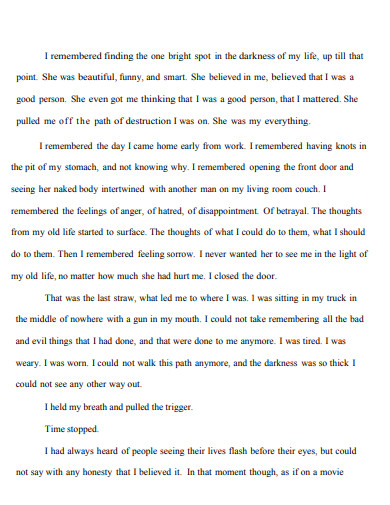
volstate.edu
10. Cause and Effect Essay Cheat Sheet

palomar.edu
11. Patterns Cause and Effect Essay

press.umich.edu
12. Formal Cause and Effect Essay
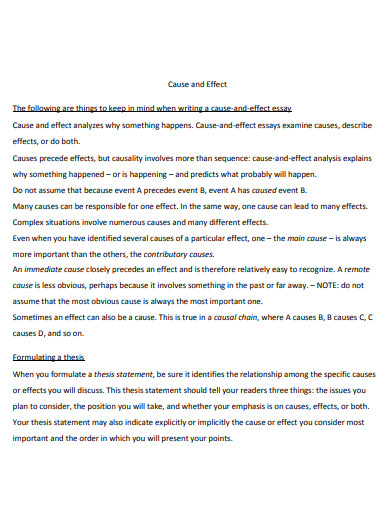
lindenwood.edu
13. Printable Cause and Effect Essay
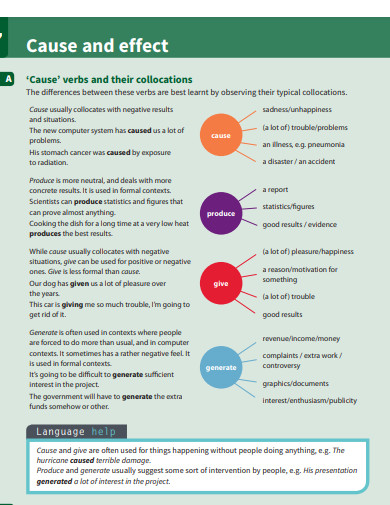
languageadvisor.net
14. Editable Cause and Effect Essay
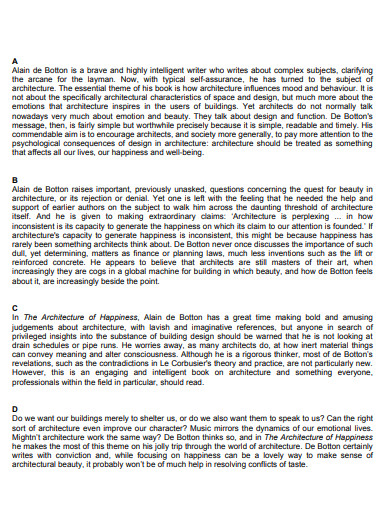
cambridgeenglish.org
15. Organization Cause and Effect Essay
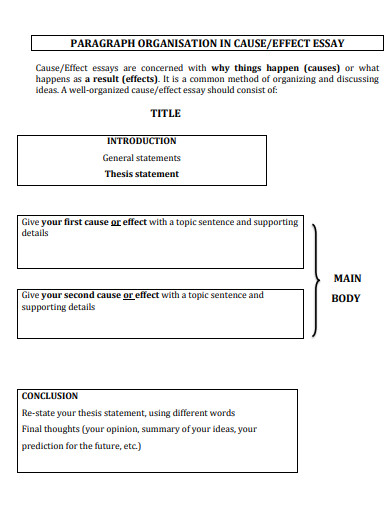
ybd.yildiz.edu.tr
16. Cause and Effect Essay Practice
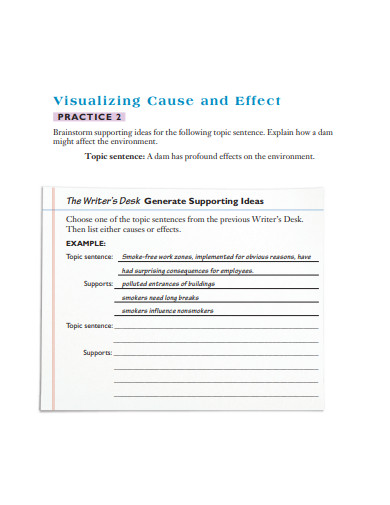
pearsoncanada.ca
What is a Cause and Effect Essay?
A cause and effect essay is a type of expository writing that investigates the relationships between events, actions, or phenomena. It aims to uncover the reasons (causes) behind a particular occurrence and highlight the resulting consequences (effects). By examining these connections, writers can offer readers a deeper comprehension of how various factors interplay within a given context.
How to write a Cause and Effect Essay
Before we embark on this enlightening journey of crafting a cause and effect essay, let’s outline the fundamental steps that will guide us through the process. By following these steps, you’ll be equipped to create a structured and compelling essay that reveals the intricate patterns behind seemingly unrelated events.
Step 1: Choosing a Topic
Select a topic that piques your interest and is conducive to cause and effect analysis. It could be a social issue, scientific discovery, historical event, or any subject that offers a fertile ground for exploration.
Step 2: Conducting Research
Gather relevant information through various sources, such as books, articles, case studies, and scientific methods. Observe behaviors, identify key elements, and understand the context surrounding your chosen topic.
Step 3: Developing a Thesis Statement
Craft a clear and concise thesis statement that outlines the main objective of your essay. This statement should encapsulate the cause-and-effect relationship you aim to explore.
Step 4: Organizing Your Essay
Create an outline that serves as the skeleton of your essay. Choose from different outline formats, such as chronological, categorical, or sequential, depending on the nature of your topic. This will help you arrange your ideas logically and maintain a coherent flow throughout your essay.
FAQs
What’s the difference between cause and effect and correlation?
While cause and effect imply a direct relationship between events, correlation suggests a statistical association. Cause and effect delve into the mechanism behind an outcome, whereas correlation focuses on the simultaneous occurrence of two variables.
Can I use first-person pronouns in a cause and effect essay?
Generally, it’s recommended to maintain an objective tone in academic writing. However, if your essay involves personal experiences or observations, carefully integrate first-person pronouns while emphasizing the cause-and-effect relationship.
How do I ensure a strong link between causes and effects in my essay?
Use appropriate verbs to establish a clear cause-and-effect connection. Verbs like “cause,” “result in,” “lead to,” “trigger,” and “contribute to” help elucidate the relationships between events and their outcomes.
In the realm of academic exploration, cause and effect essays serve as invaluable tools for dissecting the complex tapestry of existence. By tracing the threads that bind events and outcomes, we gain a deeper understanding of the world’s inner workings. Armed with this knowledge and the steps outlined above, you are well-equipped to embark on your own cause and effect essay journey, unraveling the mysteries that shape our reality. So, grab your metaphorical magnifying glass and start deciphering the intricate web of cause and effect today.

